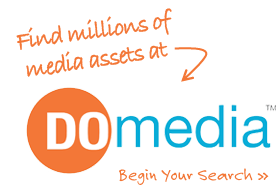In a digital and physical advertising landscape where consumers are constantly bombarded with visual noise, it is no longer enough for ads to be eye-catching at a glance—they need to be remembered.
That is where innovative out-of-home (OOH) design comes into play. While OOH is often perceived as a static and traditional medium, creative breakthroughs have proved that there is still a way to stand out in an over-saturated ad world and leave an unforgettable impact through high-impact platforms.
From jaw-dropping and audience-captivating 3D displays to DOOH campaigns that are context-aware, brands are leaning towards OOH that not only reels viewers in but keeps them staring. Innovation matters, and it may be the only way to stand out from other ads in this day and age.
Why Innovation Matters in OOH Design
OOH’s mass-reach abilities are mighty, but the true power lies in the creative execution of the campaign. Consumers today put visuals first and are skeptical of designs that are too ad-centered. Innovative OOH cuts through this resistance and provides a refreshing message that is relatable, pop-culture-aligned, and unforgettable.
According to the OAAA, OOH delivers the highest ad recall across all channels, but that recall increases significantly when the design is unexpected or emotionally engaging. Investing in great creative will expand reach far beyond the physical location of the billboard and prove to have an immense return on investment (ROI).
3 Types of Innovative OOH Design
- 3D & Sculptural Elements
Billboards that break the rectangular frame with extended props, cut-outs, or add-ons. These immediately stand out from traditional OOH signage as they play with depth and dimension, often turning billboards into actual sculptures; the Wicked OOH campaign featured this style of innovative design.
These formats are especially effective in high-foot traffic areas as they often turn into local landmarks that garner constant photo and social media attention. This simple but effective innovative OOH design element turns one billboard into thousands of organic impressions.
- Motion Elements
Adding movement to OOH brings them to life, especially when synced with real-life attributes such as the weather, time of day, and relevant current news topics. From rotating displays to shifting color schemes, motion helps create a dynamic and eye-catching ad story.
Elements that move create suspense on the display’s next movement, which increases dwell time and longer engagement with the ad. In the long run, this brings in higher brand recall due to prolonged exposure to a given message.
- Augmented Reality Integration
Pairing billboards with mobile interactivity—through QR codes, AR mobile extensions, or proximity-based offers—brings the physical and digital worlds together. Augmented reality-enhanced OOH allows viewers to point their phone at a billboard and trigger an instant virtual experience, and QR codes can lead to conversion-based online touchpoints.
These integrations boost engagement and allow for trackable results, outfitting to turn a visual moment into a measurable conversion opportunity.
Final Thoughts
OOH advertising has involved far beyond static and flat billboards. With today’s creative thinking and innovative advertising tools, brands have the freedom to design campaigns that surprise the masses and convert them into profitable audiences.
The best OOH doesn’t just fit into the environment; it transforms it into a powerful experience.




